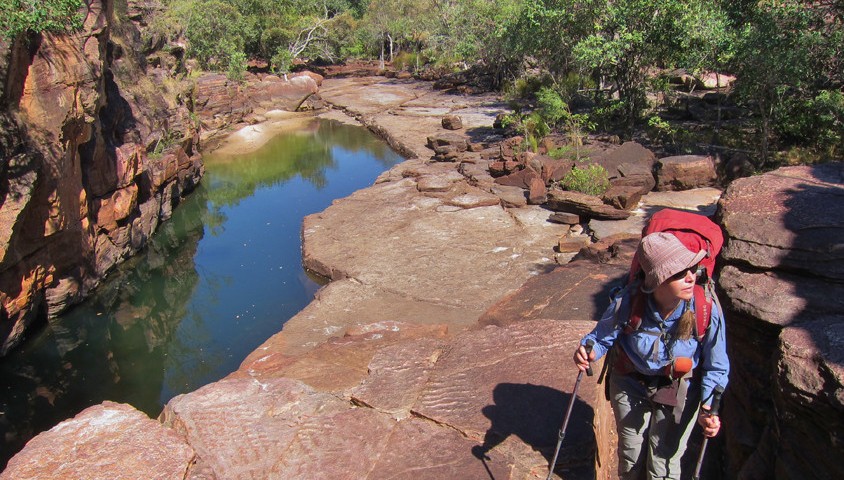As we reported earlier this year, the sixth draft management plan for Kakadu National Park was available for public comment until the end of January.
Now the submissions period has closed, the federal Department of the Environment has released a Draft Walking Strategy for the national park, a document designed to cover usage by bushwalkers and hikers in the area, on which it invites public comment until Friday, March 20.
Ostensibly, the need for a walking strategy in the region is because, as stated in the document’s summary, ‘there has been a continuing decline in both interstate and international visitor numbers to Kakadu’.
Areas for improvement include infrastructure and signage, clarifying the approved bushwalking network as well as introducing an enhanced online permit and trial fee structure. It’s worth noting, however, that this strategy is an outlook document only and developments suggested within it are to be completed over the next 20 years – not all at once.
For visitors, this will hopefully result in a better experience albeit at a higher price. Traditional owners in the area and tour operators should also benefit from any strategy that increases visitor numbers.
However, that isn’t the case across the board, with veteran bushwalking tour operator, Russell Willis voicing his concern regarding a note on page 99 of the full draft.
This particular section relates to the current availability of permits in the Mount Brockman area beyond the Gubara Pools day walk, stating:
During the last round of consultation, traditional owners indicated that they do not want bushwalking to occur in the Mount Brockman area beyond the Gubara Pools day walk, until cultural heritage assessments are carried out and the cultural significance of sites can be properly determined. Overnight bushwalking permits will not be issued for this area in the near future, while cultural heritage assessments are taking place.
The concern for Willis, who owns and operates Willis’s Walkabouts, is that this region a particularly popular area for bushwalkers.
“In terms of the number of permits issued, above Gubara has been by far the most popular bushwalking destination in the park for the last five years,” he said. “Closing the whole area is a little like closing the entirety of Wilsons Prom just because someone may or may not have done the appropriate consultations 20 years or more ago.”
Willis was a member of the committee that helped review the proposed walking strategy while it was being prepared, submitting his own thoughts during the drafting process.
“I noted that it takes at least two nights to visit the art sites in the area and I have a feeling the majority only go for one night anyway,” he said. “Allowing people a single night only would restrict access to areas of cultural significance for traditional owners, while still providing access to beautiful camping sites next to the many freshwater pools.”

Campsites like this one will no longer be available to overnight bushwalkers for the foreseeable future if the walking strategy is implemented as stated.
The site in question was recently visited, written about and featured in Wild issue 145, with contributor Warwick Sprawson spending several nights exploring the natural beauty and cultural heritage that exists there.
“I can understand the concerns of the traditional owners because there are so many art sites in the vicinity and I suppose it’s relatively open to potential abuse,” Sprawson said in a recent interview. “In having said that I didn’t see any evidence of vandalism and I know from first-hand experience that all visitors are put through a rigorous vetting process prior to gaining a permit at all.”
Under the new strategy, that vetting process would be carried out completely online and would become even more rigorous than is currently enforced, including an ‘in-park training program with Park staff and traditional owners’.
Both full and summary versions of the walking strategy are available from the Department of the Environment website, while comments on the strategy should be sent to kakadu.permits@environment.gov.au.
The Department of the Environment has been invited to comment on this story, but had not replied by the time of publication. We will update this story as further information become available.


